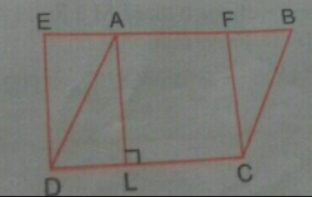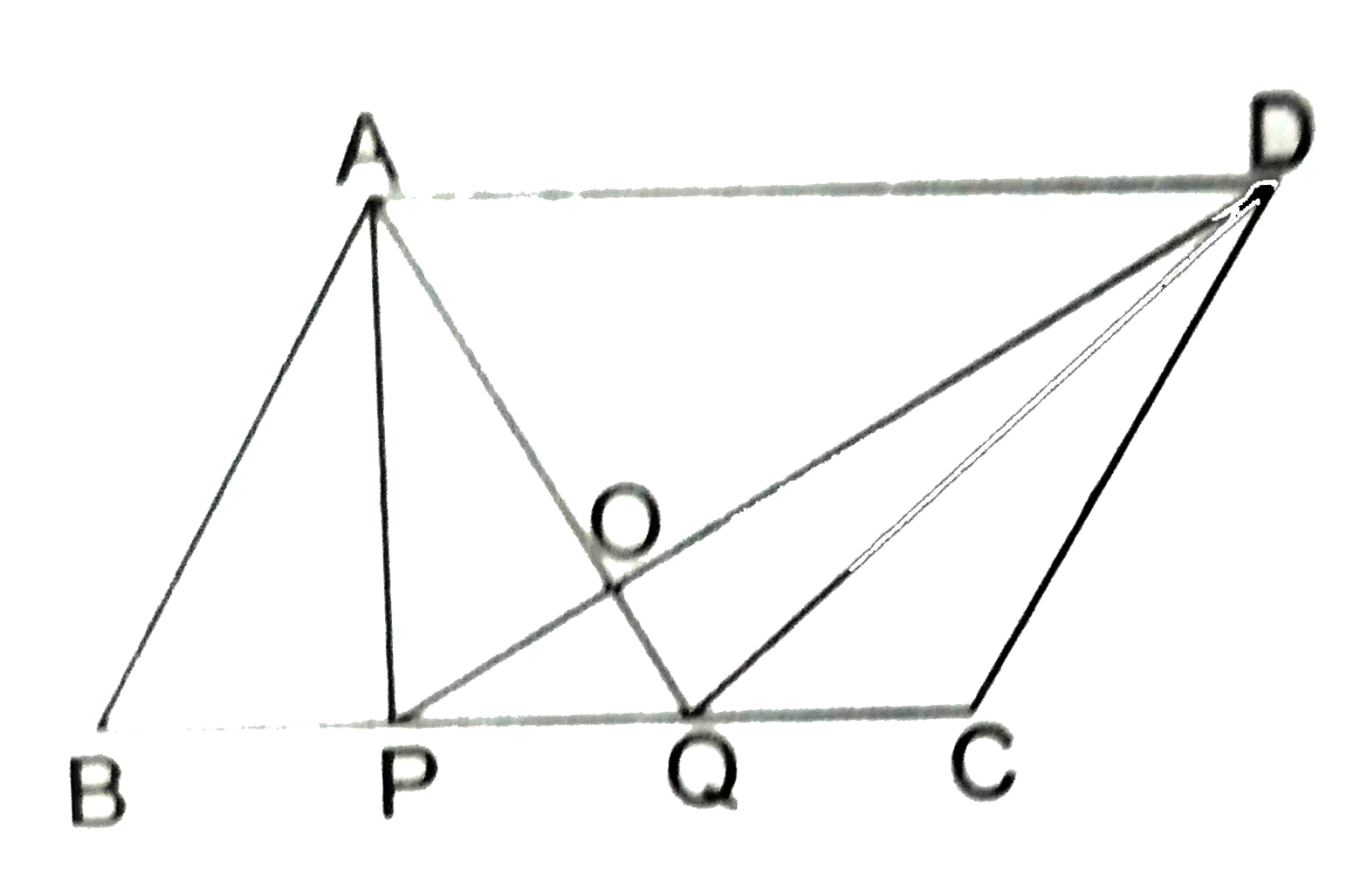In the following figure, ABCD is a parallelogram and EFCD is a rectangle. Also, AL⊥DC. Prove that
(i) ar(ABCD)=ar(EFCD)
(ii) ar(ABCD)=DC×AL.

Step by step video & image solution for In the following figure, ABCD is a parallelogram and EFCD is a rectangle. Also, AL⊥DC. Prove that (i) ar(ABCD)=ar(EFCD) (ii) ar(ABCD)=DC×AL. by Maths experts to help you in doubts & scoring excellent marks in Class 9 exams.
Updated on:21/07/2023Topper's Solved these Questions
Similar Questions
Knowledge Check
In the given figure, ABCD and AEFD a re two parallelograms.

ar(ΔPEA) =Aar(∣∣gmΔPEA)Bar(ΔPFD)Car(ΔQFD)Dar(∣∣gmΔCQPB)In figure, if parallelogram ABCD and rectangle ABEM are of equal area, then
Aperimeter of ABCD = perimeter of ABEMBperimeter of ABCD< perimeter of ABEMCperimeter of ABCD> perimeter of ABEMDperimeter of ABCD=12 (perimeter of ABEM)
In the adjoining figure, ABCD is a parallelogram and P is any points on BC. Prove that
ar(△ABP)+ar(△DPC)=ar(△PDA).

View SolutionIn the adjoining figure, MNPQ and ABPQ are parallelogram and T is any point on the side BP. Prove that
(i) ar(MNPQ)=ar(ABPQ)
(ii)ar(△ATQ)=12ar(MNPQ).

View SolutionIn the following figure ABCD is a trapezium in which AB∣∣DC. Find the measdure of ∠C.

View SolutionABCD is a parallelogram. X and Y are mid-points of BC and CD. Prove that ar(△AXY)=38ar(∣∣gmABCD)
View SolutionIn the adjoining figure, ABCD is a parallelogram. Points P and Q on BC trisect BC. Prove that
ar(△APQ)=ar(△DPQ)=16ar(△ABCD).

View SolutionIn the given figure, ABCD is a parallelogram. E and F are any two points on AB and BC, respectively. Prove that ar(△ADF)=ar(△DCE).
View Solution


